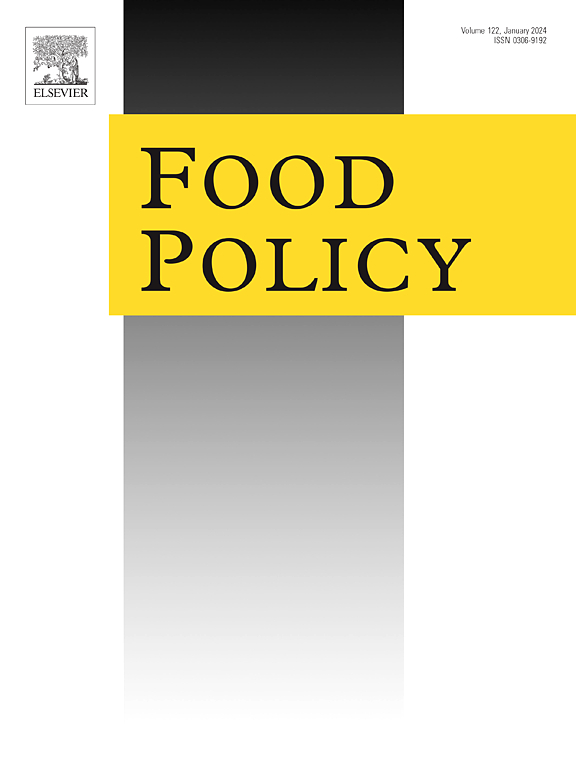Uncovering the World Food Program’s economic footprint in East Africa
IF 6
1区 经济学
Q1 AGRICULTURAL ECONOMICS & POLICY
引用次数: 0
Abstract
We use general-equilibrium modelling methods to estimate the “economic footprint” of the operations of a major international development agency on the national and regional economies in which it operates. We find that each dollar spent by the United Nations World Food Program (WFP) Regional Bureau of Nairobi (RBN) operations increases the total value of production in the East African region by as much as $2.30 and regional real (inflation-adjusted) gross domestic product (GDP) by up to $1.42. There are large variations across countries. For example, real-income effects range from $3.68 in Uganda to −$2.38 in Eritrea. WFP-RBN spending adds up to 20,047 year-round equivalent jobs for skilled workers and 365,606 jobs for unskilled workers in East Africa. Though not a focus of this study, we show that WFP RBN cash-based transfers to households add to these impacts. To our knowledge, this is the first effort to rigorously document the economy-wide impacts of the operations of a major development actor.
揭露世界粮食计划署在东非的经济足迹
我们使用一般均衡建模方法来估计一个主要国际发展机构的业务对其所在国家和区域经济的“经济足迹”。我们发现,联合国世界粮食计划署(WFP)内罗毕区域局(RBN)每花费一美元,就能使东非地区的生产总值增加多达2.30美元,区域实际(经通胀调整的)国内生产总值(GDP)增加多达1.42美元。各国之间存在很大差异。例如,实际收入效应从乌干达的3.68美元到厄立特里亚的- 2.38美元不等。在东非,粮食计划署- rbn的支出总计为熟练工人提供了20,047个相当于全年的工作岗位,为非技术工人提供了365,606个工作岗位。虽然不是本研究的重点,但我们表明,世界粮食计划署向家庭提供的RBN现金转移增加了这些影响。据我们所知,这是第一次严谨地记录一个主要发展参与者的运作对整个经济的影响。
本文章由计算机程序翻译,如有差异,请以英文原文为准。
求助全文
约1分钟内获得全文
求助全文
来源期刊

Food Policy
管理科学-农业经济与政策
CiteScore
11.40
自引率
4.60%
发文量
128
审稿时长
62 days
期刊介绍:
Food Policy is a multidisciplinary journal publishing original research and novel evidence on issues in the formulation, implementation, and evaluation of policies for the food sector in developing, transition, and advanced economies.
Our main focus is on the economic and social aspect of food policy, and we prioritize empirical studies informing international food policy debates. Provided that articles make a clear and explicit contribution to food policy debates of international interest, we consider papers from any of the social sciences. Papers from other disciplines (e.g., law) will be considered only if they provide a key policy contribution, and are written in a style which is accessible to a social science readership.
 求助内容:
求助内容: 应助结果提醒方式:
应助结果提醒方式:


